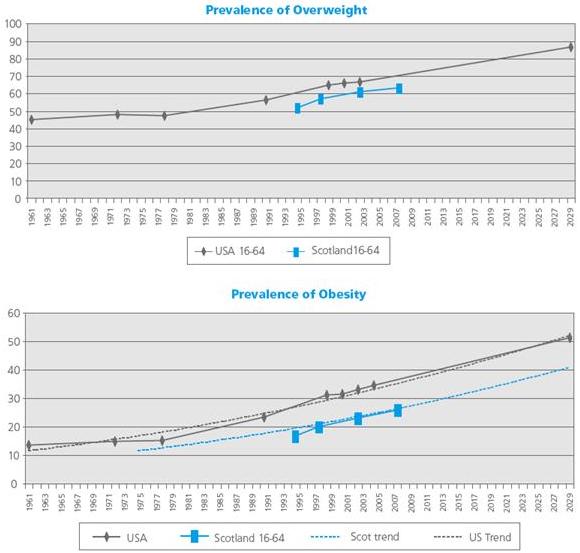Obesity claims inflated again
Slimming World warned last week that people in the East Midlands are the fattest in the UK, while those in London are the slimmest. None are exactly svelte, mind.
The story was based on a poll, and appealed to the BBC, The Daily Telegraph, The Express, The Herald and the Daily Mirror. Slimming World and YouGov polled 2,148 people and concluded that the East Midlands has an average BMI of 28.9, with Scotland second at 28.4. London was lowest at 26.1.
There’s no reason to doubt that, within its limitations, the poll is roughly right. The latest Health Survey for England came up with an average BMI for all adults of 27. But the poll did not have sufficient respondents to make any regional comparisons that are worth printing. No confidence intervals are quoted.
But hey, this is a survey, isn’t it? And that’s more than enough of an excuse for journalists to leave their critical faculties at the door.
I have slightly more trouble with the claim in Slimming World’s press release that “obesity continues to rampage through the country, with statistics showing that obesity and overweight continues to rise in every single region”. No previous survey is cited to justify this claim, I can’t find one on the Slimming World website, and a request to the magazine for sight of one has so far gone unanswered.
However, it you need something to put Slimming World’s claims into perspective, take a look at a new report out today from the Scottish Government. It warns of the huge health costs of obesity – probably rightly – but its estimate of the future numbers of obese Scots is a wild and easily falsifiable guess.
It predicts that 41 per cent of Scots aged 16-64 will be obese by 2030, on the basis of the graphs below. These show Scotland matching the trend in the US, but with a 12-year timelag. The US projections appear to be based on five data points between 1979 and 2003 for overweight, rather more for obesity.

But this overlooks the fact that since 2003 obesity in the US has flatlined. Women have shown no increase between 1999 and 2008, and men no significant increase since 2003. The most recent paper on this subject was published by authors from the US Centres for Disease Control in the Journal of the American Medical Association in January.
So today’s projections from Scotland are based on figures that are five years out of date, when more recent figures are readily available. They assume without justification that Scotland will follow the US, and then fail to take account of recent changes in US trends. They are meaningless.
What about England, and the claims made by Slimming World? Are they true? Lots of people believe it, but data from the Health Survey for England suggests that, like the US, a plateau may have been reached. Admittedly it’s a vertiginously high plateau but there is evidence that overweight and obesity has stopped rising in the past few years, in contradiction of the Slimming World claims.
The best measure is perhaps the proportion who are “overweight including obese”. For most age groups in both men and women, the trend is flat. For all men, the proportion “overweight including obese” in 2008 was 65.9 per cent, roughly where it was in 2000 (65.5 per cent). There’s evidence of a slight fall since 2006.
For all women, the proportion in this category is 56.9 per cent, which shows a slight increase since 2000 (55.1 per cent). For children aged 2-16, the figure peaked in 2004 at 35.1 per cent, and was 30.2 per cent by 2008. The summary of the data says that “the increase in obesity prevalence has been slower in the second half of the period (the past 15 years) and there are indications the trend may be flattening out, at least temporarily”.
Among children, the summary says, obesity in boys has remained between 17 and 19 per cent since 2002, and among girls there was a significant decrease between 2005 and 2006.
All in all, equivocal data but hardly evidence of a rampage. The next few years’ figures will be interesting in determining if overweight and obesity have peaked, or are still gradually increasing. Meanwhile, watch out for exaggerations that are no doubt well-meant but distort the truth.




Samuel (not verified) wrote,
Fri, 03/09/2010 - 11:30
Great to see that people in London are the slimmest and sad to see that the people in the East Midlands are the fattest in the UK. Chicago movers